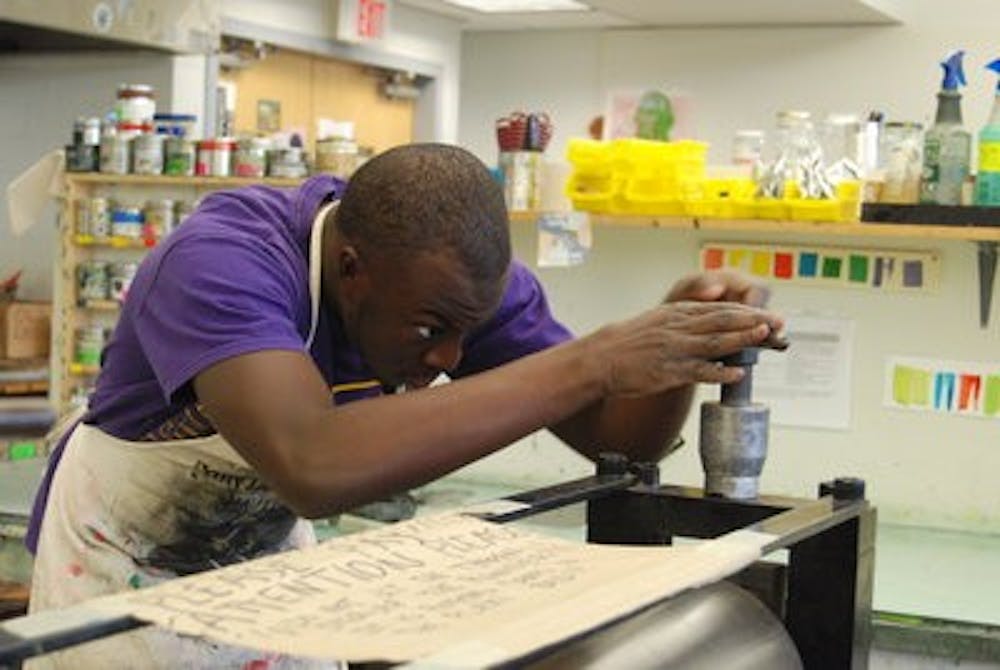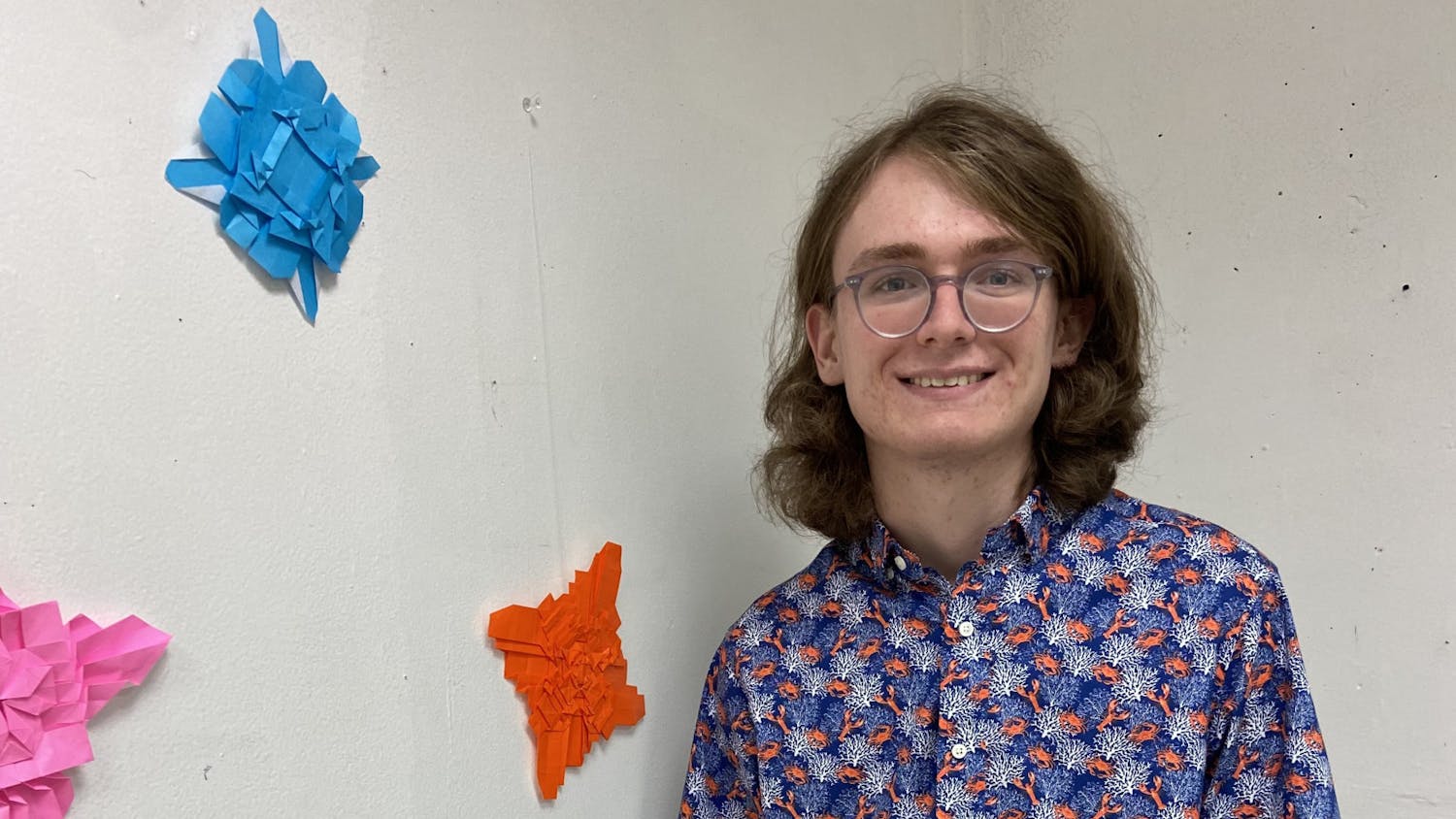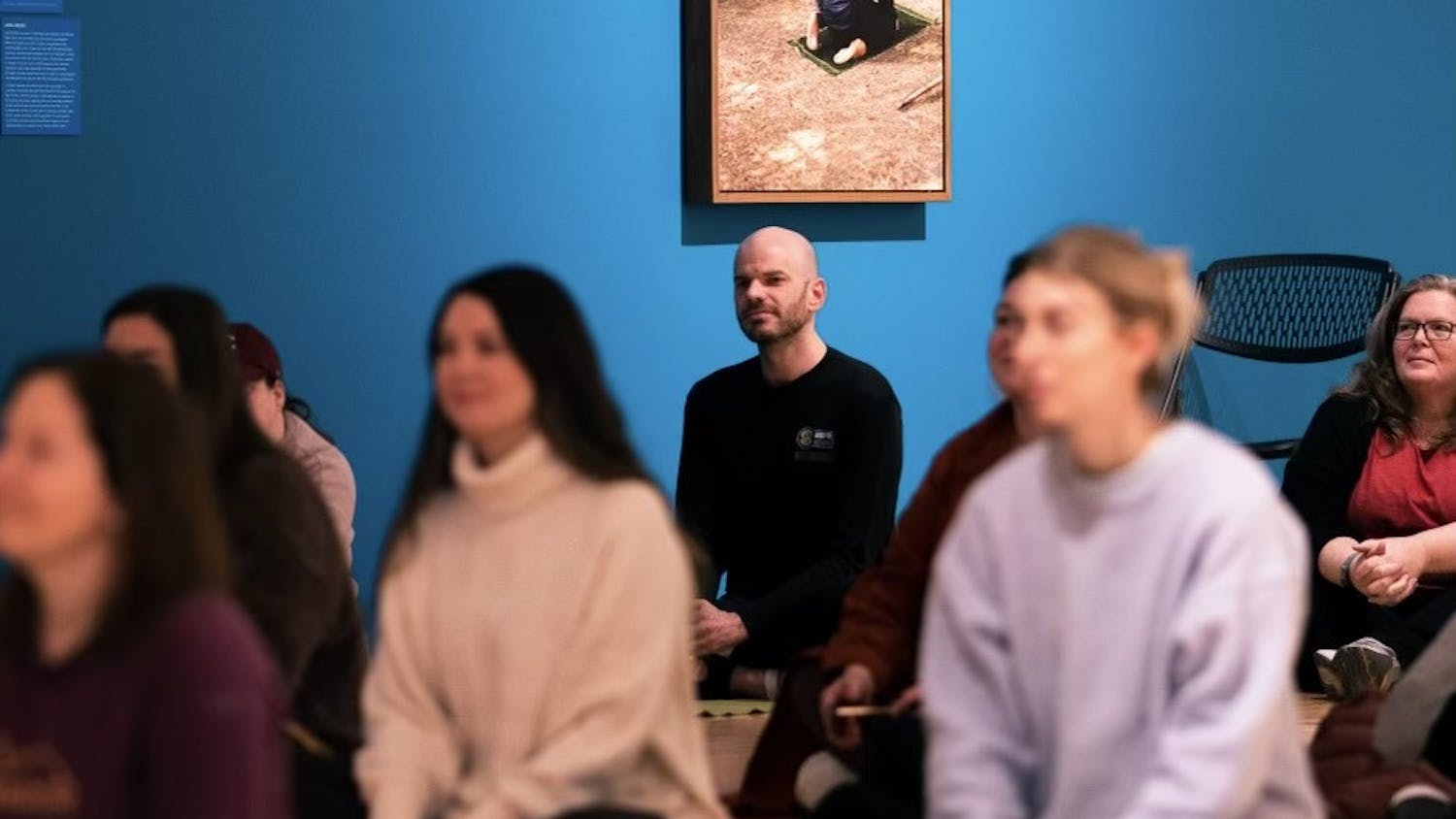In the printmaking studio in Biggin Hall, Cameron Gray, senior in art, transforms blank sheets of wood into a platform for societal commentary.
Students and faculty will get the chance to view Gray's senior thesis in the Biggin gallery until Nov. 30.
Gray's medium is woodcut, a type of relief printing.
In this style, an image is carved backwards onto a block of wood, coated in ink and run through a press where the image from the block is stamped onto a sheet.
"I think that this woodcut is an incredibly innovative commentary on today's entertainment in relation to the entertainment of the past," said Diana Lucas, senior in English literature and art. "Media has changed drastically over time and there are still some things about it that haven't changed, like as the twisting of reality."
Gray's exhibition is titled "That's All Folks," a double nod to a famous cartoon line and Gray's final semester at Auburn.
The exhibit explores stereotypes placed onto others found in television. He bridges these glanced-over implications found in shows, from childhood cartoons to reality television.
"Most people think I create this imagery," Gray said. "Most people don't think this actually exists. People just want to push it to the side and not believe in it. But it happened, so I like to bring awareness to it."
All of Gray's work depicts a Southern reality television show in the form of a 19th century minstrel show poster.
Minstrel shows were a form of entertainment in which white men would perform skits, dances, and music in blackface.
While the implications of the work have the capacity to weigh heavily on the mind, Gray attempts to create artwork that can be found topically humorous.
"I like the idea of art that either makes you laugh or it makes you think about what you're saying," Gray said. "I love art that makes me laugh or makes me think about it. One thing I've always been trying to get to is, 'Why am I laughing?'"
One of Gray's pieces depicts the main character from "Here Comes Honey Boo Boo," where Honey Boo Boo is shown striking one of her signature poses.
Gray brings to light the negative implications and stereotypes that result from this show, and how his art attempts to reveal them.
"This is people putting what they think we are out on television," Gray said. "That's all it is. When you go up North and tell them you are from the South they'll go, 'Oh, you're just like Honey Boo Boo or anything like I have seen on television.' No.
This was fueled out of anger, because I hate when people think of me a certain way because of what they've heard. Why not just try to talk to me and understand me as a person rather than going based off what you've seen?"
An underlying constant through all of Gray's work on display is bringing attention to what Gray referred to as the "other."
"These are stereotypes created by this superior class that felt as though they were superior at one point and tried to push down this 'other' that they didn't understand," Gray said.
These stereotypes created by a superior go beyond regional boundaries and into racial ones.
Gray said his study abroad experience in Italy opened his eyes to stereotypes about his race and made him feel like the "other" himself.
"The only person I saw like myself were the people who came from Ethiopia, and they would be panhandling on the streets," Gray said. "I always felt like people thought that's what I was when I would try to talk to people. They would be kind of hesitant because they thought I was trying to sell them something because that's the only time they've seen people like me."
Though Gray's works broach controversial topics, Evelyn Holladay, senior in art, said she vouches for its aesthetic quality and craftsmanship.
"His marks are really clean," Holladay said. "He has this interesting style that is very intentional."
Gray's exhibit will be open for all students to view in the Biggin Hall gallery until Nov. 30.
Do you like this story? The Plainsman doesn't accept money from tuition or student fees, and we don't charge a subscription fee. But you can donate to support The Plainsman.





